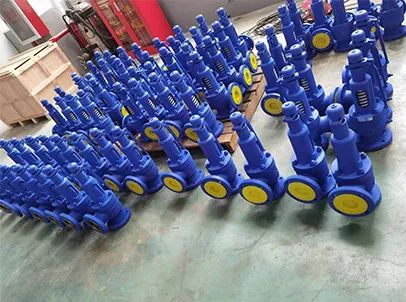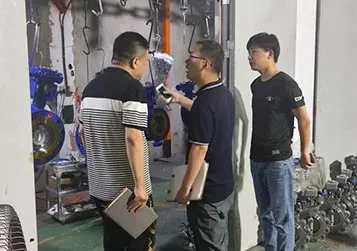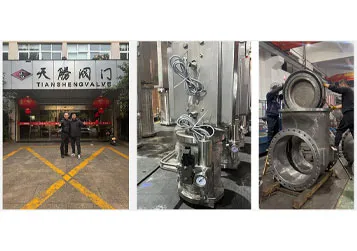- Email:info@tsv-valve.com

 Sep 04,2025
Sep 04,2025In industrial flow control systems—from municipal water pipelines to oil refineries—choosing between butterfly valves and gate valves is a critical decision that impacts efficiency, cost, and long-term reliability. While both are widely used for on/off and throttling control, they excel in different scenarios. The answer to “which is better” depends on your specific needs: pressure, media type, space, and operational goals. Below is a detailed comparison to help you decide.
Before evaluating “better,” it’s key to understand how each valve operates—this shapes their strengths and limitations.
Butterfly Valves: Feature a lightweight, disc-shaped “butterfly” inside a short, cylindrical body. Rotating the disc 90 degrees (via a handle or actuator) opens/closes the valve, regulating flow by adjusting the disc’s angle. Their design prioritizes compactness and speed.
Gate Valves: Use a vertical “gate” (slab or wedge-shaped) that moves up/down to block or allow flow. Opening/closing requires multiple rotations of a handwheel (or actuator) to lift/lower the gate fully. Their design focuses on tight sealing and high-pressure resistance.
This fundamental difference explains why butterfly valves shine in space-constrained, fast-operation scenarios, while gate valves excel in high-pressure, precision-sealing tasks.
One of the most obvious advantages of butterfly valves over gate valves is their space-saving design—a make-or-break factor for tight environments like urban pipe trenches, skid-mounted equipment, or HVAC ductwork.
Butterfly Valves: A 12-inch (300mm) butterfly valve typically weighs 20–30kg and has a body length of 15–20cm. Its short, low-profile structure fits in narrow spaces, and lightweight construction simplifies handling.
Gate Valves: The same 12-inch gate valve can weigh 80–100kg and have a body length of 40–50cm. Its tall, bulky design requires more vertical and horizontal space, making it impractical for cramped setups.
For projects where space is limited (e.g., indoor water treatment plants, building HVAC systems), butterfly valves are clearly the better choice.
Cost is a top priority for most industrial projects, and butterfly valves outperform gate valves in total cost of ownership (TCO)—from purchase to installation.
Gate valves, however, have higher upfront and installation costs—making them less ideal for budget-sensitive or large-scale projects (e.g., municipal water distribution networks).
If your system requires quick on/off responses or variable flow control, butterfly valves are superior to gate valves.
Butterfly Valves: Rotate the disc 90 degrees to fully open/close in 1–2 seconds. They also excel at throttling (regulating flow from 0–100%) thanks to their streamlined disc, which minimizes turbulence. This is critical for scenarios like fire protection (instant water release) or wastewater treatment (adjusting for sewage surges).
Gate Valves: Require 10–30 seconds (or more) to fully open/close, as the gate must be lifted/lowered slowly to avoid damage. They are poor at throttling—partial opening causes the gate to vibrate and wear, reducing lifespan.
For systems needing speed or precise flow adjustment (e.g., HVAC chilled water loops, chemical plant batch processing), butterfly valves are better suited.
Low maintenance is essential for minimizing operational downtime, and butterfly valves’ simple design gives them an edge here.
In dirty or high-cycle applications (e.g., stormwater systems, food processing lines), butterfly valves’ low maintenance needs make them more reliable.
While butterfly valves are versatile, gate valves are better for high-pressure, high-temperature (HPHT) environments—a key limitation of butterfly valves.
Butterfly Valves: Most standard models handle pressures up to 10–15 bar and temperatures up to 200°C (with special metal-sealed versions reaching 40 bar/400°C). They struggle with ultra-high pressure (50+ bar) because the disc can deform under stress.
Gate Valves: Designed for HPHT use—wedge-type gate valves can handle pressures up to 100+ bar and temperatures up to 600°C. Their full-port design (no disc blocking flow when open) also makes them ideal for thick media (e.g., crude oil, slurry) that might damage butterfly valve discs.
For oil/gas pipelines, power plant steam systems, or heavy industrial processes (e.g., steel manufacturing), gate valves are the better choice.
To simplify your decision, here’s a scenario-based breakdown:
|
Scenario |
Better Choice |
Why? |
|
Municipal water treatment |
Butterfly Valve |
Space-saving, low cost, fast operation |
|
HVAC chilled water loops |
Butterfly Valve |
Precise throttling, easy maintenance |
|
Oil refinery high-pressure lines |
Gate Valve |
Handles HPHT, durable for crude oil |
|
Power plant steam systems |
Gate Valve |
Resists high temperature/pressure |
|
Budget-sensitive large projects |
Butterfly Valve |
Lower TCO (purchase + installation) |
|
Dirty media (slurry, sediment) |
Butterfly Valve |
Simple design resists clogging |
Butterfly valves are not universally “better” than gate valves, and vice versa. Butterfly valves excel in space-constrained, low-to-medium pressure applications where speed, cost, and maintenance matter. Gate valves shine in high-pressure, high-temperature scenarios requiring robust sealing and durability.
The key is to match the valve to your system’s specific requirements: pressure, temperature, media type, space, and budget. By understanding their unique strengths, you can select a valve that optimizes flow control efficiency and reduces long-term costs—whether it’s a butterfly valve for your water plant or a gate valve for your oil pipeline. If you have more questions, please contact us. TSV provides high-quality products and services to meet customer needs.
Related News




GET A QUOTE
Talk to Our Expert